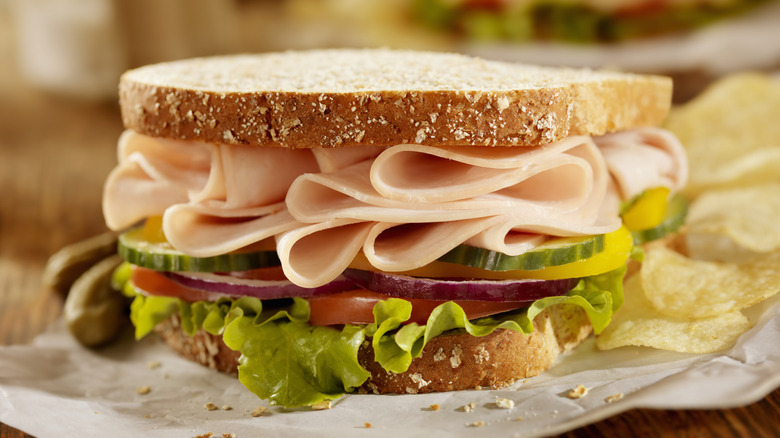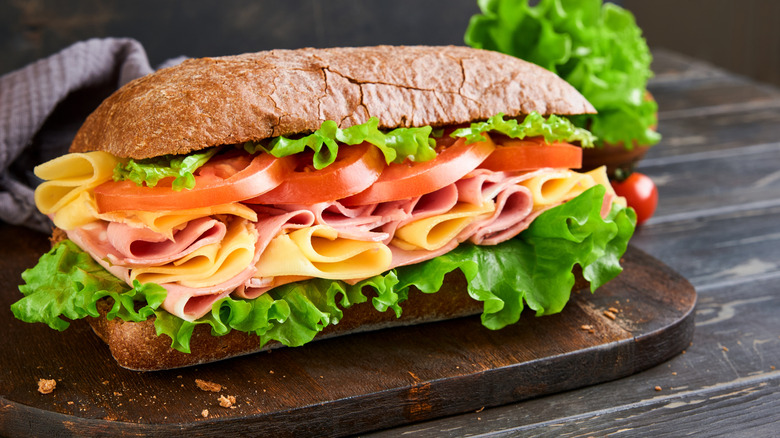The Simple Sandwich Hack That Saves You From Soggy Bottoms
You got up early and packed the perfect sandwich for your workday lunch. After loading it with plenty of meat, cheese, lettuce, tomatoes, and pickles, you slathered on the condiments and wrapped it lovingly to put in your lunchbox. But after dreaming about your delicious sandwich all day, there's nothing more disappointing than finding the bottom slice of bread soaking wet and falling apart. Fortunately, we've got an easy hack to help prevent that old soggy bottom problem.
There are plenty of sandwich-making mistakes that leave them soggy, but this simple trick is a great place to start: toasting your bread. This might sound basic, but hear us out. You don't have to eat a sandwich on dry, cold toast that cuts the roof of your mouth just to avoid sogginess. Simply toasting one side of both pieces of bread — the inside — gives you a sturdy barrier that keeps condiments and juicy ingredients from soaking through, while still leaving the outside of the bread nice and soft.
Not sure how to toast just one side? There are a few ways to do this. If your vertical toaster enables you to change widths, to accommodate bagels for instance, try putting both pieces of bread into one slot, so only the outward-facing sides get toasted. If that won't work for your toaster, you also can place the bread in a nonstick pan or cast-iron skillet and toast it over a burner (adding butter or oil to the pan first is optional). Or place the bread on a cooking sheet under the broiler in your oven or toaster oven, so only the tops get toasted.
Other anti-soggy sandwich strategies
Of course, smart sandwich assembly is a skill you ought to learn if you really want to banish sogginess. For one, consider the temperature of the bread and ingredients when making a sandwich. For example, if you toast one side of the bread and then immediately build your sandwich, the steam coming off the warm slices can end up making it wet, so be sure to let your bread cool fully first. You can also use thicker slices of bread by either buying or making a whole loaf and slicing it yourself, so there's more of a bread barrier between wet ingredients and the dry exterior.
You might even make a bread swap to reinvent your sandwich. Some types of bread, such as rye or whole grain, or even a hoagie roll, are a bit denser and better equipped to withstand moist ingredients. Or try one of Julia Child's methods for elevating her tuna sandwiches: Use an English muffin.
Other hacks include strategic stacking, so that meat and lettuce (the drier ingredients) sit against the bread slices, protecting them from the wetter ingredients, such as tomatoes and pickles, which are placed in the center. Additionally, oil-based condiments, such as mayonnaise or even butter, tend to repel moisture; a light layer (not too thick) of mayo on your bread can actually help keep it dry. But if you like a liberal drizzle of vinegar and oil, like they do at the sandwich shops, consider packing the condiments separately and adding them just before you eat. Here's hoping these hacks can help all your packed lunches live up to your early-morning daydreams.

